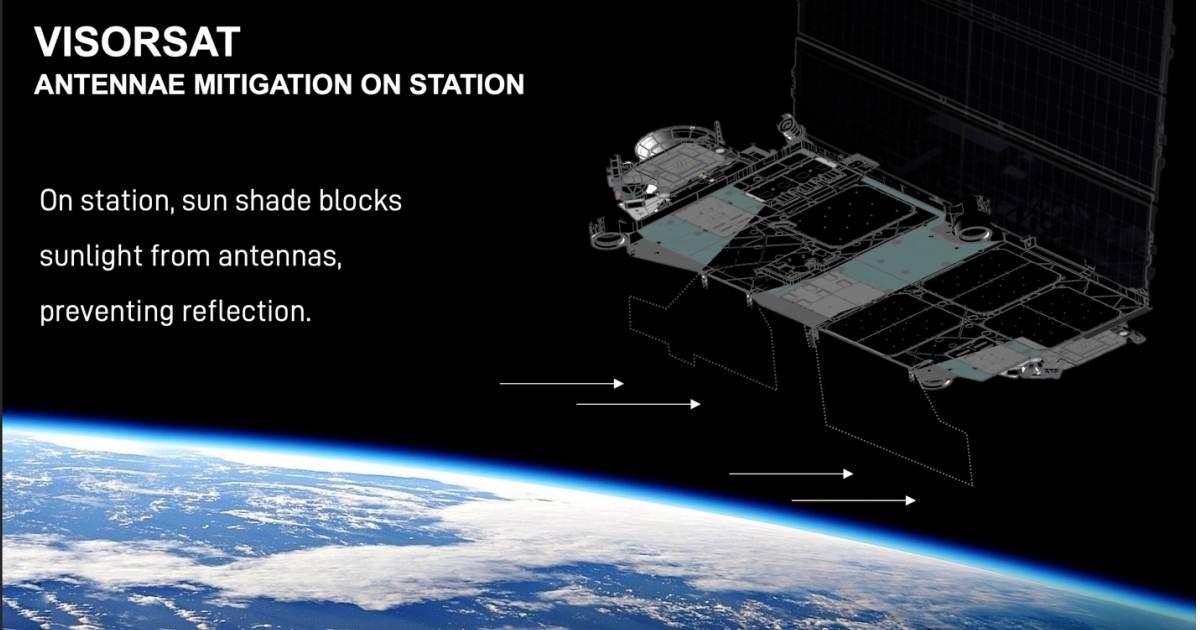SpaceX will be trialing some new tricks with its broadband satellites in an effort to stop annoying some folks and freaking out others here on terra firma.

Image: SpaceX
SpaceX's Starlink project aims to provide high speed, low latency broadband connectivity across the planet. The venture involves putting thousands of small satellites into orbit and there are about 400 of the little buggers floating around up there already after another successful recent launch.
One of the challenges SpaceX is facing is how to stop freaking out people and annoying star gazers due to reflection issues. In a January launch, one of the satellites deployed had experimental coating that was to hopefully reduce its reflectivity. It seems this prototype, called “DarkSat”, has achieved some success.
SpaceX says the darkening of the phased array and parabolic antennas reduced the brightness of the satellite by about 55%
At a Starlink discussion recently held at the National Academy of Sciences, SpaceX provided more detail on its goals, which includes:
- Making the satellites generally invisible to the naked eye within a week of launch.
- Minimizing Starlink's impact on astronomy by darkening satellites so they do not saturate observatory detectors
SpaceX says it firmly believes:
".. in the importance of a natural night sky for all of us to enjoy, which is why we have been working with leading astronomers around the world to better understand the specifics of their observations and engineering changes we can make to reduce satellite brightness"
Part of its efforts involves working on changing the way the satellite flies up from insertion to parking orbit and to station.
Next: "VisorSat"
Satellite darkening has some drawbacks, so SpaceX is also moving forward with a sun visor solution. This involves an RF-transparent deployable visor that blocks light from reaching most of the satellite body, and all of the diffuse parts of the main body. More details can be found here.
It's expected the first VisorSat prototype will be among a deployment this month.
SpaceX said late last year it hoped to be offering services in the USA this year. As for Australia, it still has a few hoops to jump through. Just because you might have a broadband satellite constellation, it doesn't mean you can just go ahead and start beaming services to the land down under at will. In November last year, SpaceX took the initial steps required to operate its Starlink satellite broadband service in Australia.



